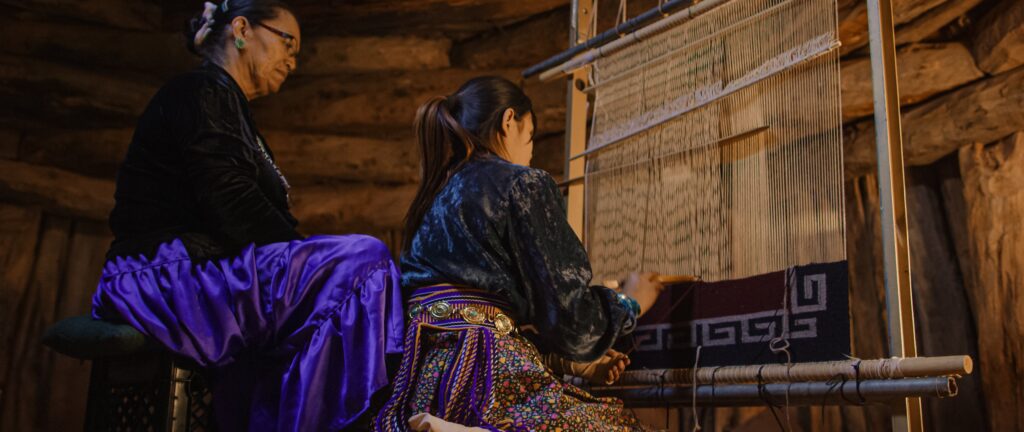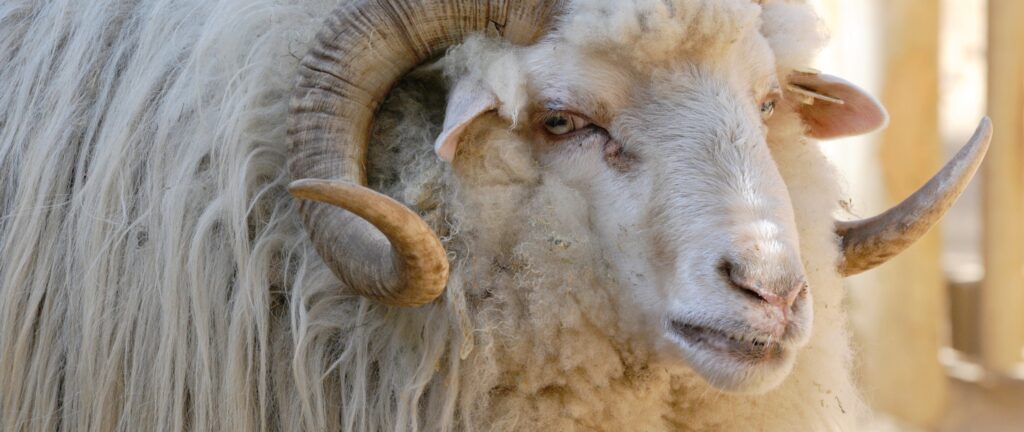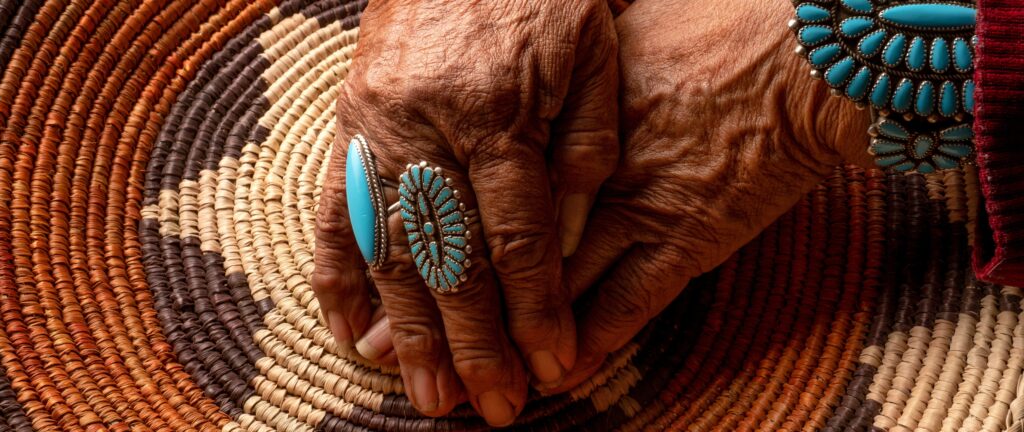From Tradition to Textile: Navajo-Churro Sheep and the Diné Way of Life
Earlier this week, Monday October 9, was Indigenous People’s Day, and Wool Month is continuing through October. It brought to mind for us the long and deep connection that humans have had with our favorite animal, the sheep.
Sheep were one of the first animals to be domesticated by humans, sometime between 11000 BC and 9000 BC in the Fertile Crescent of the modern day Middle East. This marked a significant step in human development, because access to meat, milk, and skins was a big survival advantage. The first evidence we have of sheep’s wool being used comes later, around 6000 BC, though wool felt is widely known to be one of the first fabrics. From there, sheep made their way around the world over time, following humans to the far reaches of the globe: Asia, Australia, New Zealand, Africa, Europe, England.
And the Americas. As far as the history books know, the first sheep came with Christopher Columbus’s second voyage in 1493, and the breed was the Spanish Churro. A second shipment came with Hernán Cortés in 1519. And somehow, those sheep made their way north to the ancestral lands of the Diné (Navajo), in northern New Mexico and Arizona.
Today, the Navajo-Churro sheep breed are the descendants of those immigrants long ago. They quickly became woven into Diné life, so let’s hear their side of the story.

The Diné and the Dibé dits’ozí
In “A Short History on Navajo-Churro Sheep” found on the website for Diné Bé’Iiná (The Navajo Lifeway), it’s said that “Diné philosophy, spirituality, and sheep are intertwined like wool in the strongest weaving.” The Diné people were aware of sheep for thousands of years from the wild species that lived here in the Americas, but they asked their Holy People for a domesticated sheep to tend and care for. When the sheep arrived in the early 1600s, the Navajo-Churro sheep became the answer to their prayers, and it initiated a shift to a more agro-pastoralist way of life.
This centered the sheep at the heart of Diné life and culture, featuring in ceremony, providing lean meat, and giving their wool for weaving and felting. As legend goes, Spider Woman, an important helper and protector in Diné lore, provided songs, techniques, and prayers, and Spider Man built the first looms to weave the sheep’s wool into textiles. The weaving tradition continues today and can be seen in the well-known intricate creations of Diné weavers.

The Breed
Navajo-Churro sheep are a hardy breed uniquely suited to the dry, rugged environment of the desert Southwest. They are tall, yet smaller than many sheep breeds, making them especially agile out on the range. The ewes are self-sufficient, and have strong maternal instincts and a high lambing rate, often birthing out in the field with no assistance. As excellent foragers, they don’t require grain or any other supplemental feed. It’s like they were built for the Diné’s homeland.
With no fleece on their faces, legs, or bellies, they don’t pick up large amounts of burrs and other plant debris. This is beneficial, because their wool doesn’t require the chemical solvents that so many modern wool processors use to dissolve this vegetable matter. In addition, the wool isn’t as high in lanolin as other breeds’ wool, so the raw Navajo-Churro wool can be spun directly into yarn without needing to be washed or carded. And their wool is unique—they have a soft, wooly undercoat and long, coarser outer hair. When spun together, it creates a strong and glossy yarn well suited to the high quality Diné weavings known around the world by discerning collectors.
Aside from their wool, Navajo-Churro are also excellent milking and meat sheep. The meat is prized for being much leaner and milder tasting than other sheep breeds. In 2007, Slow Food International organized around the breed and Diné producers to get this premium meat into the hands of chefs who admire its quality and flavor.
The Navajo-Churro breed almost didn’t make it to the 21st century, suffering two major setbacks. The first was in 1863, when frontiersman Kit Carson was hired by the US military to move the Diné from their homelands, which he accomplished by burning crops and orchards, and slaughtering their herds of sheep. Then again in the 1930s, US Government policy led to another slaughtering of the Navajo-Churros and then breeding the remainders with other sheep for more “desirable” traits. This effectively ruined the Diné’s source of wool for their weaving and nearly drove the breed to extinction.
In the 1970s, with only about 450 Navajo-Churros left, the breed was brought back from the brink. Today, their numbers are growing with the love and support of the Diné people.

Continuing the Tradition
Today, many devoted ranchers are caring for Navajo-Churro sheep and sharing the harvest with us through the meat, the yarn, and the weavings. Here at Shepherd’s Dream, we’ve been making pure and natural bedding by hand for over 25 years, and this process cannot even begin without the dedication of the ranchers and wool producers to ethically and respectfully raise and handle the sheep. We know what an uphill marathon this can be, especially with an American wool market that is only beginning to recover from near total collapse.
Whether you’re a foodie, a crafter, or a collector of fine goods, perhaps there’s a place in your life for some Navajo-Churro products? We encourage seeking connections with producers directly, or doing your research to ensure that what you’re buying is authentic and goes toward supporting Diné livelihoods. Check out the resources below to begin your journey.
- Diné Bé’iiná (The Navajo Lifeway)— A Diné nonprofit organization led by Navajo weavers and shepherds since 1991. Organizers of the Sheep Is Life Celebration held in June in Arizona each year.
- Rainbow Fiber Co-Op— Cooperative supporting shepherds and offering Navajo-Churro yarns direct to consumers.
- Weaving in Beauty— A fiber arts store in Gallup, NM that sells Navajo-Churro yarn and other weaving supplies, as well as educates about Southwestern arts.
- Slow Food Foundation— Organization dedicated to biodiversity in food. The tabs at the bottom of the page can put you in touch with producers and program coordinators.
For more of our own coverage of fiber arts, check out these Counting Sheep posts:
Thanks so much for stopping by, and follow along for more of our adventures in wool on Instagram and Pinterest. Until next time, sweet dreams!

